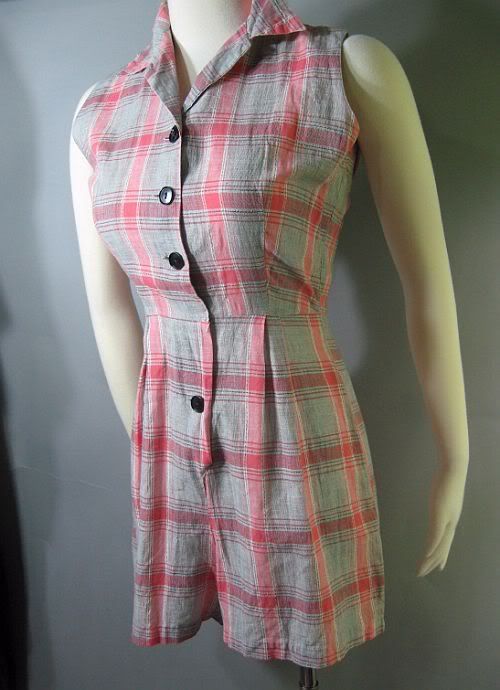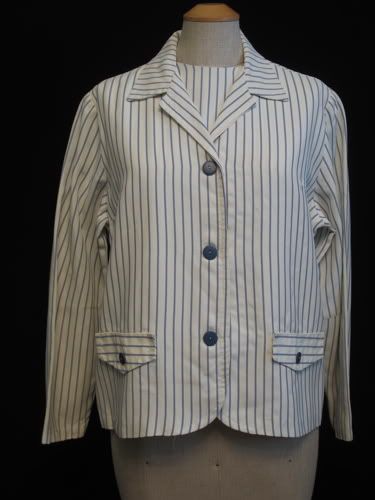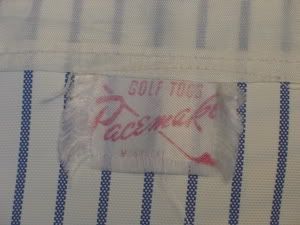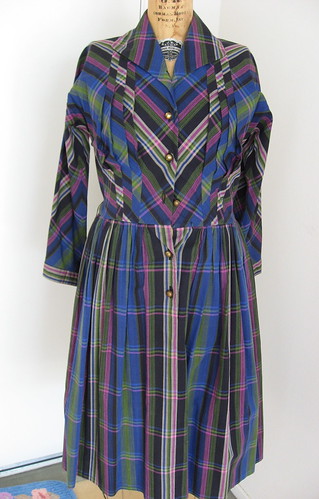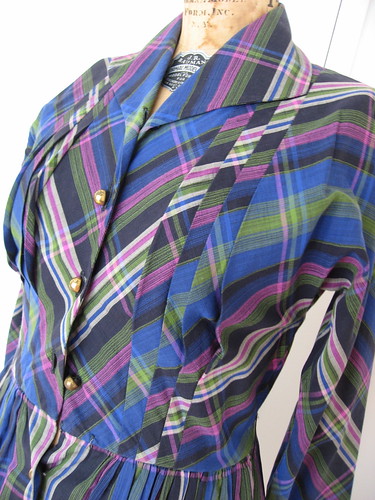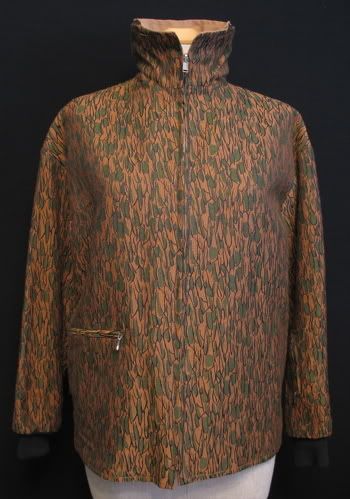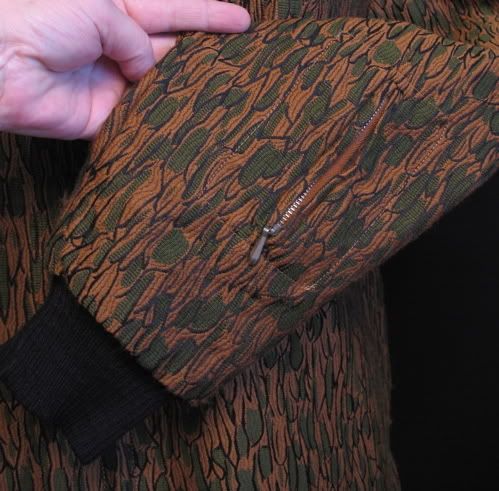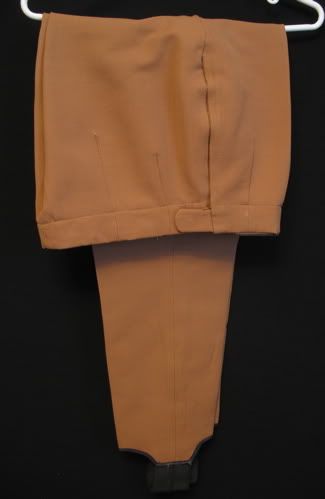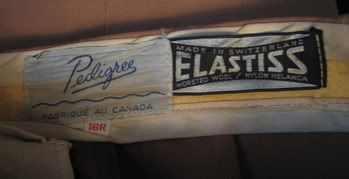fuzzylizzie
Alumni
Hello again! I'm starting just a bit early today because I decided to break this talk into 2 parts. This morning you'll be reading about some of the active sports that women have played.
Public, or Social Sports
In yesterday's workshop I talked about how the advent of all-women colleges led to women wearing "pants" for private sports activities. Today I'll finish up by discussing publicly played sports, and the different track the clothing for those sports took. And I'll finish up with a look at the rise of casual wear in the Western world.
As stated earlier, people became more interested in sports and physical activity in the mid 1800s. Along with an interest in sea bathing and gymnastics, sports and games began to appear at social occasions. Among these sports were shuttlecock (badminton), croquet, and skating. Later, women took up tennis, golf and bicycling. The big difference between these activities and those of swimming (in the early days, at least), gymnastics and basketball, was that these sports were played in social settings with both men and women present. For young, unmarried women, these were occasions in which to check out and attract the opposite sex. And so fashion took precedence over function. Looking pretty was more important than making the shot.
So, in the 19th century, women pretty much wore fashionable dress for sports. There were a few concessions, made partly due to safety concerns. Skating dresses were often several inches shorter than regular dress. Skirts were sometimes hiked by the use of buttons or by an "elevator," a mechanical device that lifted the skirt several inches, exposing the petticoats.
The following illustrations come from 19th century Harper's Bazar magazines. I'll post them in chronological order with a few words about each. One thing to notice is that even though these seem like crazy things to be wearing to play a game, they were often simpler than other dresses of the time. And also note that the non-players or spectators are also wearing simplified dress. Such simplified wear became known as outing dress, and later as sporting costume and then as sportswear, and the name was applied whether or not one was to be physically active.
<img src=http://fuzzylizzie.com/myPictures/sports/badminton1868.jpg>
Country toilettes ~ 1868
<img src=http://fuzzylizzie.com/myPictures/sports/skate1876.jpg>
Skating Dresses ~ 1876
<img src=http://fuzzylizzie.com/myPictures/sports/tennis1881.jpg>
Tennis Dress ~ 1881
<img src=http://fuzzylizzie.com/myPictures/sports/1891tennis.jpg>
Tennis Dress ~ 1891
<img src=http://fuzzylizzie.com/myPictures/sports/outingdresses1893.jpg>
Outing Dress ~ 1893
<img src=http://fuzzylizzie.com/myPictures/sports/outingdress1896.jpg>
Outing Dress ~ 1896
By the 1920s, the term sportswear had come to mean clothing that was worn for casual occasions, and not necessarily for active players. Now, a few words about some sports and how the clothes worn for each evolved:
Tennis
Tennis came to the US in the 1870s. Because it required a special playing area, for many years it was pretty much an upper-class game. Women really just batted the ball back and forth, as it was pretty much impossible to run in the dresses. But by 1885, tennis shoes with rubber soles were being made, and some younger players were developing a more active playing style.
By the turn of the century, women were playing tennis in a blouse and skirt that was shortened several inches above the fashionable length. It was also around 1900 that white clothing became the color of tennis clothes. There are several theories about why, but most likely it was because at the time white was a very fashionable color. For some reason, the white stuck with tennis. At any rate, if you were to attend a tennis match in 1905, you would notice a marked difference between how the players and how the spectators were dressed. The players would be obviously wearing tennis attire.
<img src=http://fuzzylizzie.com/myPictures/sports/teenstennis.jpg>
Early 20th century tennis costume
Typical tennis dress continued to improve with shorter skirts and short sleeve blouses until 1919. France tennis star Suzanne Lenglon took the court at Wimbleton dressed in a special ensemble designed by Patou. She wore a pleated skirt that came to just below the knee and a sleeveless top cut straight and to the hip. She rolled her white stockings to just above the knee and wore a wide headband wrapped around her cropped hair. But probably most important was what she was NOT wearing: a corset. Other tennis players were quick to adopt Lenglen's costume, and a few years later, so did fashion in general.
For more about Lenglen and to see photos of her dress, visit this site.
By the 1930s, the stockings has been replaced by ankle socks, and in 1933 player Alice Marble wore shorts on the court. But shorts for competitive women's tennis did not catch on, though they are often pictured in vintage sewing patterns in the 30s and 40. Even today, skirts are expected at the highest level of play.
<img src=http://fuzzylizzie.com/myPictures/sports/tennispattern1935.jpg>
Tennis shorts, circa 1935, but they'd never have been made in blue!
But even though shorts were never really accepted on the tennis court, the skirt gradually shortened to the mid thigh, with matching panties worn beneath. In 1949 Gussie Moran caused a stir at Wimbleton when she wore panties trimmed with lace. When Chris Evert did the same about 25 years later, it was merely considered to be cute.
<img src=http://fuzzylizzie.com/myPictures/salesimp1-2999/simp2474.jpg>
Late 1940s tennis dress sewing pattern
Golf
Golf was developed in Scotland and came to the US and Canada in the 1870s. In the 1890s it gained in popularity and courses were being built all over America. Illustrations from 1890s fashion magazines show a very practical ensemble being worn by women golfers, usually an A-line skirt a couple of inches above the ground, topped with a blouse.
<img src=http://fuzzylizzie.com/myPictures/golf/golf1894.jpg>
From Harper's Bazar, 1894
Similar styles were worn through the 1910s, with the skirt gradually shortening and with an improvement to the back of the blouse: pleats were introduced that allowed for more freedom of movement. Women were also wearing knit sweaters to play in cooler weather.
<img src=http://fuzzylizzie.com/myPictures/golf/thermoscoatsweater1913.jpg>
1913, ad for Thermos Sports Sweaters
By the 1920s, the golf dress was still often two pieces, a jersey knit top worn over a matching pleated skirt. Golf dresses were rather plain, but women, like men, often wore patterned stockings. Beginning arond 1921, you sometimes see photos and drawings of women wearing knickers on the golf course.
<img src=http://fuzzylizzie.com/myPictures/golf/bonwit25golf.jpg>
from a 1925 Bonwit Teller Sports Book
During the 1930s and 40s, golf attire followed fashion somewhat, but dressmakers and designers were coming up with ways to make the dress more suited to the sport. Pleated vents in the back of the bodice, buttons on sleeves and pockets were common features. Unlike the tennis dress, the golf dress pretty much followed fashion as to length. Because the game was not as active as tennis, there was never a need to shorten the skirt.
<img src=http://fuzzylizzie.com/myPictures/golf/golfad1949royal.jpg>
1949 golf dress ad
<img src=http://i41.photobucket.com/albums/e270/fuzzylizzie/DacksGolfShoes.jpg>
These great golf shoes are men's, but women wore similar ones; these are from Dack's. Thanks to Mary Jane at Poppy's Vintage Clothing for this photo
By the late 1950s it was becoming acceptable for women to wear knee length shorts on most courses. Over the next decades, women abandoned the golf dress for the more practical shorts, skorts, and slacks. Interestingly, in the past few years, the golf dress has made a comeback. Today's version is more like a tennis dress, and often borders on sexy. Surprised??
<img src=http://fuzzylizzie.com/myPictures/golf/mcgregorgolfas1964.jpg>
1964 ad for McGregor golf clothes
Bicycling
The fad of the 1890s was bicycling. Fueled by feature articles in magazines and newspapers, men and women turned to the bicycle by the thousands. Remember, this was before the car, and so the bicycle was not just a toy - it was personal transportation.
But there was a major hindrance to women riding bicycles - their skirts. The problem was solved in several ways. First, and probably most common, was the wearing of a shorter skirt, with the hem several inches from the ground. This skirt would have been paired with bicycle boots that laced almost to the knee, or wool gaiters worn over the shoes.
Here is a wonderful bicycling suit that is at the Atlanta History Center.
There were also special skirts designed that buttoned to form a true skirt, but unbuttoned when riding to make a sort of divided skirt or culotte.
But most talked about at the time, were bicycling bloomers. By this time, bloomers were very common on college campuses, but still were not being worn in public. As the bicycle craze progressed, it began to be suggested that the best solution to the skirt problem was bloomers. Fashion magazines began to show them and sewing patterns became available. There was also much discussion in the press about the appropriateness of bloomers, and the conclusion usually was, in women's magazines, at least, that wearers should always take care to have a skirt handy to go over the bloomers when not actually riding.
<img src=http://fuzzylizzie.com/myPictures/sports/bicycle1894bazar.jpg>
1894 illustration in Harper's Bazar
How popular were bicycling bloomers? It's hard to separate the media hype from what was the reality. In preparing for this workshop I found dozens of period drawings of the bloomers, but only one actual photograph of an 1890s woman wearing them. And I found many photos of women wearing the short bicycle skirt.
There are many historic cartoons lampooning bicycle bloomer wearers. I'd think it would have taken a very strong individual to have the courage to have worn them in most towns. How about those of you who collect and sell 19th century wear; do these come up often in the marketplace?
After the turn of the century, the popularity of bicycling faded as cars became available. And for the next ten years, the bloomer was forgotten.
Hiking and Camping
Hiking and camping really don't qualify as either a public or as a private sport. Outside of organized camps, camping as recreation has from its beginnings in the 1870s, been primarily a family activity. So these activities took place out-of-doors, but in isolated locations with often only a woman's family. And it was also quite common for groups of women friends to camp together. Because of this, dress was very informal, and the rules were relaxed.
<img src=http://fuzzylizzie.com/myPictures/sports/hunting1893.jpg>
From Harper's Bazar, 1893
<img src=http://fuzzylizzie.com/myPictures/camp/teenscampers.jpg>
Group of women campers, late 1910s
Camping increased in popularity through the last three decades of the 19th century, but it was the invention of the car that caused a sharp increase in camping. The car could take a group to the edge of the wilderness, and the party would hike to their camping spot. Or the car itself was often used as a kind of primitive RV, as they made tents that attached to the car. Stores like Abercrombie & Fitch opened to supply the popular sport. From Abercrombie & Fitch, campers could buy everything from the tent to fishing lures, to a compass to special hiking clothing.
From the 1910 A & F catalog:
In late years there has been a tremendous increase in the number of women who have elected to share the sportman's pleasures and hardships, and their special needs too, have received at our hands the most careful consideration...
The range of clothing for women who shared the sportsman's pleasures was quite diverse, but they had one major thing in common, they were completely practical. All the skirts, whether for skating or hiking, were several inches to around a foot above the foot. And they offered a wide range of choice. For each style, a woman could choose her "bottom" piece, either a short skirt, a divided skirt, bloomers or knickerbockers (traditionally a male garment that was similar to bloomers, but were slimmer with less fabric.)
<img src=http://fuzzylizzie.com/myPictures/catalog/A&F1910b.jpg> <img src=http://fuzzylizzie.com/myPictures/catalog/A&F1910f.jpg> <img src=http://fuzzylizzie.com/myPictures/catalog/A&F1910c.jpg> <img src=http://fuzzylizzie.com/myPictures/catalog/A&F1910d.jpg>
4 choices from the 1910 A & F catalog
The popularity of camping continued into the 1920s, and by the early 20s knickerbockers were being offered by more than just sports outfitters. By 1923 knickers suits were offered at department stores and through mail order catalogs. The 1923 Sears catalog featured a knickers suit on a page entitled "Correct togs for outing and sportswear." A popular brand of knickers was "The Fad of the Hour." Knickers clearly were not just for camping any more. Women were wearing them for other casual occasions.
<img src=http://fuzzylizzie.com/myPictures/sports/fad001.jpg>
1920s knicker suit
<img src=http://fuzzylizzie.com/myPictures/wnc/pisgah.jpg>
<img src=http://fuzzylizzie.com/myPictures/wnc/pisgah2.jpg> Early 20s hiking party, Mt Pisgah, near Asheville, NC
Skiing
Skiing as a recreational sport came late to the US. There were some hardy skiers from before the turn of the century, but it was not until the very late 1920s that Americans began to ski for fun, and the first ski resorts were opened. It didn't take long for Americans to embrace skiing the way they had golf and bicycling. Most interestingly, from the beginning of the ski boom, women skiers wore slacks. By 1929 slacks for women were becoming increasingly accepted for the beach, so why not the snow as well!
<img src=http://fuzzylizzie.com/myPictures/skiing/skijantzen47.jpg>
Jantzen ad, 1947
Okay, your turn! I want to see some great active sportswear. This afternoon I'll be concluding the workshop with sportswear as casual wear, or "Women Wearing Shorts and Slacks!"
Public, or Social Sports
In yesterday's workshop I talked about how the advent of all-women colleges led to women wearing "pants" for private sports activities. Today I'll finish up by discussing publicly played sports, and the different track the clothing for those sports took. And I'll finish up with a look at the rise of casual wear in the Western world.
As stated earlier, people became more interested in sports and physical activity in the mid 1800s. Along with an interest in sea bathing and gymnastics, sports and games began to appear at social occasions. Among these sports were shuttlecock (badminton), croquet, and skating. Later, women took up tennis, golf and bicycling. The big difference between these activities and those of swimming (in the early days, at least), gymnastics and basketball, was that these sports were played in social settings with both men and women present. For young, unmarried women, these were occasions in which to check out and attract the opposite sex. And so fashion took precedence over function. Looking pretty was more important than making the shot.
So, in the 19th century, women pretty much wore fashionable dress for sports. There were a few concessions, made partly due to safety concerns. Skating dresses were often several inches shorter than regular dress. Skirts were sometimes hiked by the use of buttons or by an "elevator," a mechanical device that lifted the skirt several inches, exposing the petticoats.
The following illustrations come from 19th century Harper's Bazar magazines. I'll post them in chronological order with a few words about each. One thing to notice is that even though these seem like crazy things to be wearing to play a game, they were often simpler than other dresses of the time. And also note that the non-players or spectators are also wearing simplified dress. Such simplified wear became known as outing dress, and later as sporting costume and then as sportswear, and the name was applied whether or not one was to be physically active.
<img src=http://fuzzylizzie.com/myPictures/sports/badminton1868.jpg>
Country toilettes ~ 1868
<img src=http://fuzzylizzie.com/myPictures/sports/skate1876.jpg>
Skating Dresses ~ 1876
<img src=http://fuzzylizzie.com/myPictures/sports/tennis1881.jpg>
Tennis Dress ~ 1881
<img src=http://fuzzylizzie.com/myPictures/sports/1891tennis.jpg>
Tennis Dress ~ 1891
<img src=http://fuzzylizzie.com/myPictures/sports/outingdresses1893.jpg>
Outing Dress ~ 1893
<img src=http://fuzzylizzie.com/myPictures/sports/outingdress1896.jpg>
Outing Dress ~ 1896
By the 1920s, the term sportswear had come to mean clothing that was worn for casual occasions, and not necessarily for active players. Now, a few words about some sports and how the clothes worn for each evolved:
Tennis
Tennis came to the US in the 1870s. Because it required a special playing area, for many years it was pretty much an upper-class game. Women really just batted the ball back and forth, as it was pretty much impossible to run in the dresses. But by 1885, tennis shoes with rubber soles were being made, and some younger players were developing a more active playing style.
By the turn of the century, women were playing tennis in a blouse and skirt that was shortened several inches above the fashionable length. It was also around 1900 that white clothing became the color of tennis clothes. There are several theories about why, but most likely it was because at the time white was a very fashionable color. For some reason, the white stuck with tennis. At any rate, if you were to attend a tennis match in 1905, you would notice a marked difference between how the players and how the spectators were dressed. The players would be obviously wearing tennis attire.
<img src=http://fuzzylizzie.com/myPictures/sports/teenstennis.jpg>
Early 20th century tennis costume
Typical tennis dress continued to improve with shorter skirts and short sleeve blouses until 1919. France tennis star Suzanne Lenglon took the court at Wimbleton dressed in a special ensemble designed by Patou. She wore a pleated skirt that came to just below the knee and a sleeveless top cut straight and to the hip. She rolled her white stockings to just above the knee and wore a wide headband wrapped around her cropped hair. But probably most important was what she was NOT wearing: a corset. Other tennis players were quick to adopt Lenglen's costume, and a few years later, so did fashion in general.
For more about Lenglen and to see photos of her dress, visit this site.
By the 1930s, the stockings has been replaced by ankle socks, and in 1933 player Alice Marble wore shorts on the court. But shorts for competitive women's tennis did not catch on, though they are often pictured in vintage sewing patterns in the 30s and 40. Even today, skirts are expected at the highest level of play.
<img src=http://fuzzylizzie.com/myPictures/sports/tennispattern1935.jpg>
Tennis shorts, circa 1935, but they'd never have been made in blue!
But even though shorts were never really accepted on the tennis court, the skirt gradually shortened to the mid thigh, with matching panties worn beneath. In 1949 Gussie Moran caused a stir at Wimbleton when she wore panties trimmed with lace. When Chris Evert did the same about 25 years later, it was merely considered to be cute.
<img src=http://fuzzylizzie.com/myPictures/salesimp1-2999/simp2474.jpg>
Late 1940s tennis dress sewing pattern
Golf
Golf was developed in Scotland and came to the US and Canada in the 1870s. In the 1890s it gained in popularity and courses were being built all over America. Illustrations from 1890s fashion magazines show a very practical ensemble being worn by women golfers, usually an A-line skirt a couple of inches above the ground, topped with a blouse.
<img src=http://fuzzylizzie.com/myPictures/golf/golf1894.jpg>
From Harper's Bazar, 1894
Similar styles were worn through the 1910s, with the skirt gradually shortening and with an improvement to the back of the blouse: pleats were introduced that allowed for more freedom of movement. Women were also wearing knit sweaters to play in cooler weather.
<img src=http://fuzzylizzie.com/myPictures/golf/thermoscoatsweater1913.jpg>
1913, ad for Thermos Sports Sweaters
By the 1920s, the golf dress was still often two pieces, a jersey knit top worn over a matching pleated skirt. Golf dresses were rather plain, but women, like men, often wore patterned stockings. Beginning arond 1921, you sometimes see photos and drawings of women wearing knickers on the golf course.
<img src=http://fuzzylizzie.com/myPictures/golf/bonwit25golf.jpg>
from a 1925 Bonwit Teller Sports Book
During the 1930s and 40s, golf attire followed fashion somewhat, but dressmakers and designers were coming up with ways to make the dress more suited to the sport. Pleated vents in the back of the bodice, buttons on sleeves and pockets were common features. Unlike the tennis dress, the golf dress pretty much followed fashion as to length. Because the game was not as active as tennis, there was never a need to shorten the skirt.
<img src=http://fuzzylizzie.com/myPictures/golf/golfad1949royal.jpg>
1949 golf dress ad
<img src=http://i41.photobucket.com/albums/e270/fuzzylizzie/DacksGolfShoes.jpg>
These great golf shoes are men's, but women wore similar ones; these are from Dack's. Thanks to Mary Jane at Poppy's Vintage Clothing for this photo
By the late 1950s it was becoming acceptable for women to wear knee length shorts on most courses. Over the next decades, women abandoned the golf dress for the more practical shorts, skorts, and slacks. Interestingly, in the past few years, the golf dress has made a comeback. Today's version is more like a tennis dress, and often borders on sexy. Surprised??
<img src=http://fuzzylizzie.com/myPictures/golf/mcgregorgolfas1964.jpg>
1964 ad for McGregor golf clothes
Bicycling
The fad of the 1890s was bicycling. Fueled by feature articles in magazines and newspapers, men and women turned to the bicycle by the thousands. Remember, this was before the car, and so the bicycle was not just a toy - it was personal transportation.
But there was a major hindrance to women riding bicycles - their skirts. The problem was solved in several ways. First, and probably most common, was the wearing of a shorter skirt, with the hem several inches from the ground. This skirt would have been paired with bicycle boots that laced almost to the knee, or wool gaiters worn over the shoes.
Here is a wonderful bicycling suit that is at the Atlanta History Center.
There were also special skirts designed that buttoned to form a true skirt, but unbuttoned when riding to make a sort of divided skirt or culotte.
But most talked about at the time, were bicycling bloomers. By this time, bloomers were very common on college campuses, but still were not being worn in public. As the bicycle craze progressed, it began to be suggested that the best solution to the skirt problem was bloomers. Fashion magazines began to show them and sewing patterns became available. There was also much discussion in the press about the appropriateness of bloomers, and the conclusion usually was, in women's magazines, at least, that wearers should always take care to have a skirt handy to go over the bloomers when not actually riding.
<img src=http://fuzzylizzie.com/myPictures/sports/bicycle1894bazar.jpg>
1894 illustration in Harper's Bazar
How popular were bicycling bloomers? It's hard to separate the media hype from what was the reality. In preparing for this workshop I found dozens of period drawings of the bloomers, but only one actual photograph of an 1890s woman wearing them. And I found many photos of women wearing the short bicycle skirt.
There are many historic cartoons lampooning bicycle bloomer wearers. I'd think it would have taken a very strong individual to have the courage to have worn them in most towns. How about those of you who collect and sell 19th century wear; do these come up often in the marketplace?
After the turn of the century, the popularity of bicycling faded as cars became available. And for the next ten years, the bloomer was forgotten.
Hiking and Camping
Hiking and camping really don't qualify as either a public or as a private sport. Outside of organized camps, camping as recreation has from its beginnings in the 1870s, been primarily a family activity. So these activities took place out-of-doors, but in isolated locations with often only a woman's family. And it was also quite common for groups of women friends to camp together. Because of this, dress was very informal, and the rules were relaxed.
<img src=http://fuzzylizzie.com/myPictures/sports/hunting1893.jpg>
From Harper's Bazar, 1893
<img src=http://fuzzylizzie.com/myPictures/camp/teenscampers.jpg>
Group of women campers, late 1910s
Camping increased in popularity through the last three decades of the 19th century, but it was the invention of the car that caused a sharp increase in camping. The car could take a group to the edge of the wilderness, and the party would hike to their camping spot. Or the car itself was often used as a kind of primitive RV, as they made tents that attached to the car. Stores like Abercrombie & Fitch opened to supply the popular sport. From Abercrombie & Fitch, campers could buy everything from the tent to fishing lures, to a compass to special hiking clothing.
From the 1910 A & F catalog:
In late years there has been a tremendous increase in the number of women who have elected to share the sportman's pleasures and hardships, and their special needs too, have received at our hands the most careful consideration...
The range of clothing for women who shared the sportsman's pleasures was quite diverse, but they had one major thing in common, they were completely practical. All the skirts, whether for skating or hiking, were several inches to around a foot above the foot. And they offered a wide range of choice. For each style, a woman could choose her "bottom" piece, either a short skirt, a divided skirt, bloomers or knickerbockers (traditionally a male garment that was similar to bloomers, but were slimmer with less fabric.)
<img src=http://fuzzylizzie.com/myPictures/catalog/A&F1910b.jpg> <img src=http://fuzzylizzie.com/myPictures/catalog/A&F1910f.jpg> <img src=http://fuzzylizzie.com/myPictures/catalog/A&F1910c.jpg> <img src=http://fuzzylizzie.com/myPictures/catalog/A&F1910d.jpg>
4 choices from the 1910 A & F catalog
The popularity of camping continued into the 1920s, and by the early 20s knickerbockers were being offered by more than just sports outfitters. By 1923 knickers suits were offered at department stores and through mail order catalogs. The 1923 Sears catalog featured a knickers suit on a page entitled "Correct togs for outing and sportswear." A popular brand of knickers was "The Fad of the Hour." Knickers clearly were not just for camping any more. Women were wearing them for other casual occasions.
<img src=http://fuzzylizzie.com/myPictures/sports/fad001.jpg>
1920s knicker suit
<img src=http://fuzzylizzie.com/myPictures/wnc/pisgah.jpg>
<img src=http://fuzzylizzie.com/myPictures/wnc/pisgah2.jpg> Early 20s hiking party, Mt Pisgah, near Asheville, NC
Skiing
Skiing as a recreational sport came late to the US. There were some hardy skiers from before the turn of the century, but it was not until the very late 1920s that Americans began to ski for fun, and the first ski resorts were opened. It didn't take long for Americans to embrace skiing the way they had golf and bicycling. Most interestingly, from the beginning of the ski boom, women skiers wore slacks. By 1929 slacks for women were becoming increasingly accepted for the beach, so why not the snow as well!
<img src=http://fuzzylizzie.com/myPictures/skiing/skijantzen47.jpg>
Jantzen ad, 1947
Okay, your turn! I want to see some great active sportswear. This afternoon I'll be concluding the workshop with sportswear as casual wear, or "Women Wearing Shorts and Slacks!"
